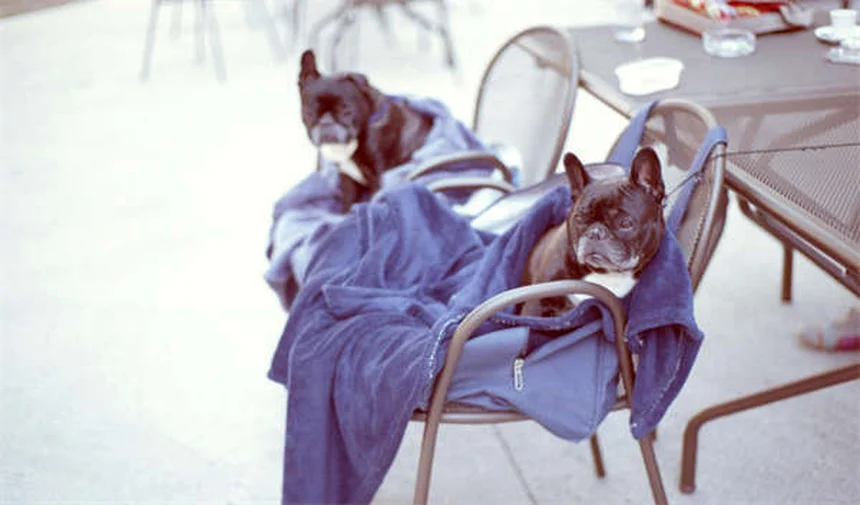Why Do Cats Like High Places? 5 Surprising Reasons Explained
Advertisement
Why do cats like high places? The answer is simple: it's in their DNA! As a cat owner for over 10 years, I've learned that when your feline friend perches on the fridge or bookshelf, they're following instincts that go back thousands of years. High spots give cats safety, warmth, and the perfect vantage point - just like their wild ancestors needed. But don't worry, you don't need to turn your home into a jungle gym! In this article, I'll share why cats love heights and how you can create safe vertical spaces they'll adore (without sacrificing your decor).
E.g. :Dog Zoomies Explained: Why Your Pup Goes Crazy Running in Circles
Advertisement
- 1、Why Your Cat Thinks They're a Mountain Climber
- 2、Making Your Home a Cat Paradise
- 3、Safety First, Adventure Second
- 4、Why Your Cat's Behavior Might Change
- 5、Final Pro Tips From a Cat Veteran
- 6、The Secret Language of Cat Perching
- 7、Turning Vertical Space Into Quality Time
- 8、The Unexpected Benefits of Cat Climbing
- 9、When Cats Take It Too Far
- 10、Creative Solutions for Small Spaces
- 11、FAQs
Why Your Cat Thinks They're a Mountain Climber
Ever walked into your kitchen only to find your cat perched on top of the refrigerator like it's Mount Everest? You're not alone! Let me tell you why your feline friend has this strange obsession with high places.
Your Cat's Inner Wild Child
Deep down, your house cat still has the heart of a wild predator. Those instincts don't just disappear because we gave them fancy cat beds!
In the wild, high places give cats two major advantages: they can spot potential prey (like that poor mouse running across your kitchen floor) and avoid becoming prey themselves. Think about it - would you rather fight a bear on the ground or watch safely from a tree? Exactly!
The Great Escape Plan
Your home might feel safe to you, but to your cat? It's full of potential threats:
| Household Danger | Cat's Solution |
|---|---|
| Loud vacuum cleaner | Bookcase perch |
| Overly excited dog | Top of refrigerator |
| Annoying house guests | Highest cat tree level |
See the pattern? Height equals safety in your cat's mind. And honestly, can you blame them? I'd climb up high too if someone was chasing me with that terrifying vacuum!
Making Your Home a Cat Paradise
 Photos provided by pixabay
Photos provided by pixabay
DIY Cat Mountain Range
You don't need to spend a fortune to satisfy your cat's climbing needs. Here's what I've done in my own home:
First, I cleared off the tops of bookshelves and cabinets. Bonus - this actually forced me to finally organize my clutter! Now my cat has her own private observation decks throughout the house.
Then I installed some simple wall shelves in a stair-step pattern. Pro tip: put them near windows so your cat can birdwatch in style. Watching her leap from shelf to shelf is better than any TV show!
When to Splurge on Cat Furniture
Sometimes it's worth investing in proper cat furniture. Here's my breakdown:
Cat trees: The Cadillacs of vertical space. Go for sturdy ones with multiple levels - your cat will thank you. I made the mistake of buying a cheap one first... let's just say it didn't survive my 15-pound Maine Coon's acrobatics!
Window perches: These are like first-class seats for your cat. Mine spends hours watching the neighborhood drama unfold. It's basically her version of reality TV.
Safety First, Adventure Second
Securing Your Cat's Playground
Did you know a falling cat tree can be dangerous? Here's what I learned the hard way:
Always anchor tall furniture to the wall. That "this probably won't tip over" feeling isn't good enough when your cat decides to launch themselves at it like a furry missile.
Check weight limits carefully. My friend's cat broke a shelf because they didn't realize their chonky boy had been sneaking extra treats!
 Photos provided by pixabay
Photos provided by pixabay
DIY Cat Mountain Range
Older cats still want to climb, but might need some help. I added pet stairs next to my cat's favorite perches when she started having joint issues. Now she can still reach her throne (aka the top of the cat tree) without risking injury.
Remember, a happy cat is one that can survey their kingdom from on high. And let's be honest - in your cat's mind, that kingdom is your entire house!
Why Your Cat's Behavior Might Change
When Height Seeking Becomes Excessive
Is your cat suddenly spending all their time in high places? This might signal stress or health issues. My cat did this when we introduced a new puppy - turns out she just needed her own safe spaces away from the chaos.
Here's a quick checklist of when to worry:
- Refusing to come down even for meals
- Panting or seeming distressed while up high
- New difficulty getting up or down
The Multi-Cat High-Rise Dilemma
In homes with multiple cats, vertical space becomes prime real estate. I have three cats, and let me tell you - the competition for the highest perch is fierce!
The solution? More vertical options than cats. This prevents territorial disputes and gives everyone their own special lookout spot. Think of it like building a feline apartment building - everyone gets their own floor!
Final Pro Tips From a Cat Veteran
 Photos provided by pixabay
Photos provided by pixabay
DIY Cat Mountain Range
Just because your cat likes heights doesn't mean they want to sacrifice comfort. I add soft blankets to my cat's favorite perches - now they're warm and elevated. Double win!
Ever notice how your cat always finds the sunniest high spot? That's because warm air rises. Place perches where sunlight comes in, and you'll create the ultimate cat magnet.
Training Your Cat to Use New Spaces
Here's a funny thing about cats - sometimes you need to show them the cool stuff you bought for them! When I installed new shelves, I used treats to encourage exploration. Now? They're her favorite spots.
Remember, every cat is different. My neighbor's cat prefers low hiding spots instead. But if your cat is a climber, embrace it! After all, who doesn't love living with a tiny, furry mountaineer?
The Secret Language of Cat Perching
Did you know your cat's choice of high spots actually tells you about their mood? That favorite bookshelf spot isn't just random - it's feline communication!
What Your Cat's Perch Position Reveals
When my tabby chooses the highest point in the room, she's basically saying "I'm the queen of this castle!" But when she settles on middle-height furniture, it's more like "I'm keeping an eye on things but staying approachable."
Here's something fascinating - cats will often choose different heights depending on who's home. When it's just me, my cat lounges on lower perches. But when strangers visit? Straight to the top shelf! It's their version of social distancing before it was cool.
The Science Behind the Height Preferences
Researchers at animal behavior centers have found some wild facts about cat elevation habits:
| Height Level | Typical Cat Behavior | Human Equivalent |
|---|---|---|
| Above 6 feet | Dominance display | Sitting at the head of the table |
| 3-6 feet | Alert observation | Leaning on the kitchen counter |
| Below 3 feet | Relaxed comfort | Lounging on the couch |
Ever notice how your cat changes positions when you bring out the treats? That's not just excitement - they're strategically positioning themselves for the best vantage point!
Turning Vertical Space Into Quality Time
Interactive Play at New Heights
I discovered something amazing last year - my cat goes crazy for feather toys when I dangle them from her high perches. It's like she becomes a tiny, furry trapeze artist!
Here's my favorite game: I'll sit on the floor near her cat tree and toss treats onto different levels. Watching her calculate the jumps is better than any circus act. Pro tip: Use soft treats so they don't bounce away - learned that after chasing way too many kibbles under the fridge!
Creating Shared High Spaces
You know what's surprisingly fun? Building a human-cat shared perch. I installed a wide windowsill shelf sturdy enough for both me and my cat. Now we people-watch together like an interspecies neighborhood watch team.
Is this getting ridiculous? Maybe. But when your cat curls up next to you on your custom-built observation deck, you'll understand why I'm obsessed with vertical bonding!
The Unexpected Benefits of Cat Climbing
How High Perches Improve Cat Health
Here's something most cat owners don't realize - all that climbing is fantastic exercise! My vet says my cat's muscle tone improved dramatically after we added more vertical spaces.
Think about it: jumping to high places works their leg muscles, balancing engages their core, and carefully descending strengthens those back legs. It's like a complete feline fitness routine! I joke that my cat gets more exercise in a day than I do in a week.
Mental Stimulation Through Elevation
Bored cats are destructive cats. But give them a vertical playground? Suddenly they're too busy being mountain goats to shred your couch!
I noticed my cat's behavior improved when I created what I call her "obstacle course" - a series of shelves, cat trees, and window perches she can traverse through the house. Now instead of scratching furniture, she's planning her next ascent. Happy cat, intact furniture - everyone wins!
When Cats Take It Too Far
The Great Curtain Climbing Incident
Let me tell you about the time my cat decided our drapes were her personal rock climbing wall. At 3 AM. The crashing sound when the rod came down? Let's just say the neighbors probably thought we were being robbed.
This taught me an important lesson: not all vertical surfaces should be cat accessible. Now we keep tempting curtains tied back and provide plenty of approved climbing alternatives.
The Fine Art of Redirecting Climbing Behavior
Here's what works when your cat gets vertical ambitions in the wrong places:
First, make the forbidden area less appealing. I used double-sided tape on curtain edges - cats hate sticky paws! Then, place an approved climbing option nearby with some catnip to attract interest. Finally, reward them heavily when they use the right surfaces.
It took patience, but now my cat ignores the curtains completely. Well, mostly. There was that one time during a particularly exciting bird sighting...
Creative Solutions for Small Spaces
Vertical Living in Apartments
Living in a tiny studio with a climbing-obsessed cat forced me to get creative. My solution? Wall-mounted cat highways using floating shelves and carpeted planks.
The secret is thinking three-dimensionally. I arranged shelves so my cat can circle the entire apartment without touching the floor. It's like her personal elevated sidewalk system! Bonus: all my floor space stays clear for human use.
Multi-Purpose Cat Furniture
When space is limited, every piece needs to pull double duty. My favorite invention? A bookshelf with built-in cat perches. The lower shelves hold books, the top has comfy cat beds, and the sides feature scratching posts.
Here's the best part - the scratching posts are wrapped in sisal rope that matches my decor. Guests often don't even realize it's cat furniture until they see my feline roommate lounging up top like the queen she is!
E.g. :the Importance of climbing for indoor cats by cat behaviourist Anita ...
FAQs
Q: Is it normal for my cat to always want to be up high?
A: Absolutely! Many cat owners wonder about this, but it's completely normal behavior. From my experience with my three cats, I've learned that seeking high places is hardwired into feline instincts. In the wild, cats climb to escape predators and hunt prey. Your house cat might not face these dangers, but those instincts remain strong. If your cat suddenly starts spending all their time in high places though, it might signal stress - especially if they're avoiding the litter box or meals. Otherwise, enjoy watching your little mountain climber!
Q: How can I make my home safer for a cat that loves heights?
A: Great question! After my cat took a tumble from an unsecured shelf, I became an expert on cat-proofing high spaces. First, always anchor tall furniture to walls - those "this probably won't tip" thoughts aren't good enough! Second, check weight limits on cat trees and shelves (my 15-pound Maine Coon taught me this lesson). Third, consider adding pet stairs for older cats. And here's my pro tip: place soft blankets or mats on perches to make them more comfortable and provide better traction. Safety first, adventure second!
Q: Do all cats like being up high or is it just some breeds?
A: While most cats enjoy vertical spaces to some degree, breed does play a role. In my years of cat sitting, I've noticed that active breeds like Bengals and Siamese are practically part monkey! But even laid-back cats appreciate having high options available. My friend's Persian rarely climbs, but loves her window perch. The key is observing your individual cat - some prefer low hiding spots while others want to conquer every high point in your home. When in doubt, offer both options and let your cat choose!
Q: How many high spaces should I provide for my cat?
A: As a rule of thumb, more is better - especially in multi-cat households. After introducing a third cat to my home, I learned the hard way about vertical space wars! Now I follow the "one per cat plus one" rule. So for my three cats, I maintain four prime high spots. This prevents territorial disputes and gives everyone options. Remember, cats don't like to feel trapped, so make sure each high space has multiple exit routes. And don't forget - window perches count as premium real estate in cat world!
Q: My elderly cat still tries to climb but struggles - what can I do?
A: I faced this with my 16-year-old tabby who refused to give up her throne (the top of the cat tree). The solution? Pet stairs and strategic perch placement! I placed sturdy pet stairs next to her favorite high spots and lowered some shelves to create intermediate steps. Also, consider orthopedic pet beds with low sides that still give that elevated feeling. The key is maintaining their dignity while keeping them safe - because let's be honest, no cat wants to admit they can't climb like they used to!







